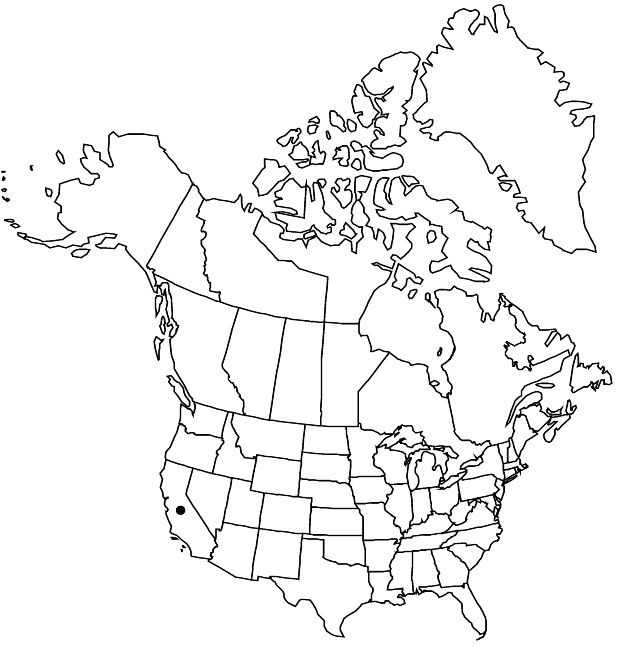Arctostaphylos bakeri
Leafl. W. Bot. 1: 115. 1934 ,.
Shrubs, erect, 1–3 m; burl absent; twigs densely glandular-hairy, puberulent, or finely tomentose with sessile glands. Leaves: petiole 3–8 mm; blade dark green, not glaucous, dull, oblong-ovate to orbiculate-ovate, 2.5–3 × 1.5–2 cm, base usually cuneate, sometimes truncate to rounded, margins entire, plane, surfaces papillate, glandular-hispidulous. Inflorescences panicles, 2–5-branched; immature inflorescence pendent, branches spreading, axis 1–2 cm, 1+ mm diam., finely glandular-hairy, puberulent, or finely tomentose; bracts not fully appressed, scalelike, deltate to awl-like, 2–4 mm, apex acute, surfaces finely glandular-hairy, puberulent, or finely tomentose. Pedicels 3–5 mm, glabrous. Flowers: corolla white, conic to urceolate; ovary glabrous. Fruits depressed-globose, 8–10 mm diam., glabrous. Stones distinct.
Discussion
Subspecies 2 (2 in the flora).
Selected References
None.
Key
| 1 | Twigs, petioles, rachises, and bracts glandular-hairy; immature inflorescence axes 1-1.5 cm. | Arctostaphylos bakeri subsp. bakeri |
| 1 | Twigs, petioles, rachises, and bracts eglandular-hairy, with sessile glands beneath; immature inflorescence axes 1.5-2 cm. | Arctostaphylos bakeri subsp. sublaevis |
